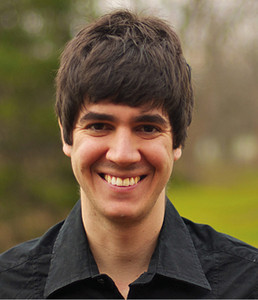
CAPESWiederhecker: he chose CampinasCAPES
Physicist Gustavo Wiederhecker, 31, finished his post-doctorate at Cornell University in 2011 and chose to return to his native Brazil despite a resume that makes him eligible for a position at a top U.S. university. After completing the respective public examinations, he was accepted by the University of Campinas (Unicamp) and the University of São Paulo (USP) in São Carlos. Both are excellent institutions, but he chose Campinas as a home base for developing his main field of interest, nanophotonics, which studies the optical properties of new materials that could potentially be applied in new technology. One example is the use of light to transport information within microchips.
His choice was based on two factors. The first was Unicamp’s longstanding tradition in photonics research, dating back to the 1970s. “There are many spin-off companies in Campinas that were started at the university,” he says. The other factor was the group of researchers with expertise in the field, including Newton Frateschi and Hugo Fragnito, whose lines of research are similar to Wiederhecker’s own. An important part of the infrastructure he seeks can be found at Unicamp’s Center for Semiconductor Components (CCS), which is equipped with a ‘clean room’, an essential part of his research. A ‘clean room’ is a superfiltered environment with a minimal number of particles per cubic meter. “In a different environment, a particle of dust can be larger than the nanometric materials that I work with,” he says. In his three years at Cornell, Wiederhecker and Professor Michal Lipson worked on nanophotonics, which studies materials just a few hundred nanometers in size (a nanometer is one millionth of a millimeter).
His goal was to discover how light could be used to move parts of a microscopic mechanism in a silicon chip. In 2009, he published a paper on the topic in the journal Nature, with his name as first author. Last year, already at Unicamp, he was part of the international group that made the cover of Physical Review Letters with a paper on optomechanical micro-oscillators (see Pesquisa FAPESP Issue No. 204).
Then came his acceptance into FAPESP’s Young Investigators program in late 2012, after a year of planning. He is now setting up his laboratory, with equipment that he shares with physicist Thiago Alegre (who was also awarded a Young Investigators grant). “By using nanophotonics, we can work on components – including silicon, in my case – on a much smaller scale. We can explore new possibilities for parts used in telecommunications equipment, for instance,” says Wiederhecker, who was born in the city of Goiânia, state of Goiás. The problem is that just one of the machines needed to manufacture the new components – which are subsequently tested at Unicamp’s Physics Institute – costs about $300,000. So the program provides a unique opportunity. “The Young Investigators funding is for an independent research project, but the equipment will be shared with others,” he says.
Wiederhecker believes that the project’s results may have an impact on technology for optical data transmission systems. “We also want to contribute to the development of technology for micro- and nano-manufacturing of components in São Paulo,” he explains.
Republish
